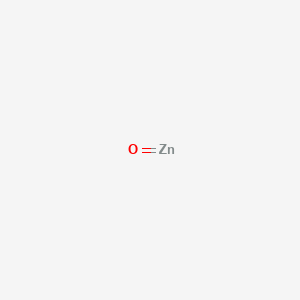幾乎可以阻隔掉所有波長的 UVA、UVB,但是因為塗起來會白白且粘粘厚厚的一層,所以限制了它的實用性,因此有些廠商發展出粒子較小的氧化鋅分子,即所謂的 Z-Cote,使用上塗在皮膚是透明的,改善了上述的缺失,同時仍可達到防護效果。
研究顯示,粒子越小的氧化鋅(例如 microfine zinc oxide 或更小的 nano zinc oxide),越有可能被肌膚吸收,間接影響人體細胞,因此也越不安全。

最多用量是多少及
粒子越小越不安全有沒有說小過什麼SIZE就不安全
想請問一下z-cote的粒子細小程度有去到microfine zinc oxide或nano zinc oxide那麼小嗎?會不會被皮膚吸收?
thanks!
安全,因為滲不進皮膚,即便滲入也不發生刺激或化學反應 (取自張麗卿 博客分享)
我一直在尋找完美的防曬 能夠完整防護紫外線A 質感要自然 好清洗的
最近買了幾款純物理防曬 都是高分比的氧化鋅 照理來說 防曬部分是可以很放心
而且現在都作的很細緻 擦起來很舒服 一點都不會死白
但是 可能是因為氧化鋅本身收斂的特質 雖然剛擦的時候很滋潤
但是 過了一會兒 整個臉像是起雞皮疙瘩一般 整個臉都很乾 還會一粒一粒的 整片浮起來...
害我現在只能去尋找化學性防曬 我本身是混合性偏乾性肌膚
是否要油性皮膚才合用? 提供給大家作參考
保養品日文正確表示名稱是"酸化亜鉛","酸化Zn"是簡略的表示名稱
我也開始使用物理性防曬,也覺得用後感覺頗乾,之後就嘗試用一比一份量混合比較滋潤的乳霜再使用,感覺比較好一點,但就不知道會否降低了防曬效果
有一款注明(non-nano)的 Zinc Oxide 是不是就比較安全呢?
防曬劑中的納米氧化鋅,接觸人體最主要的途徑是皮膚。人體皮膚角質層細胞間隙約為100nm,在某些情況下可變寬,而且毛囊使得皮膚表面積增加,納米氧化鋅在毛囊內的堆積可能成為其進入人體的潛在途徑,因此理論上防曬劑中的納米氧化鋅有可能穿透角質層的屏障進入深層活體組織。關於納米氧化鋅的經皮吸收的研究很多,Karsten Schlling等回顧了近10餘年間的研究成果,這些研究采用在體試驗或離體試驗,對納米氧化鋅在無毛小鼠、豬或人體皮膚等各種皮膚模型中的經皮吸收情況進行了探索,並未發現防曬劑中的納米氧化鋅透過皮膚角質層的屏障進入活性細胞中的證據,並認為主要原因是防曬劑中毒納米氧化鋅一般都是以聚合物的形式存在,而非原始的納米粒子。
然而,這些基於正常皮膚的研究,並不能反應皮膚角質層受損時納米氧化鋅經皮吸收的情況,仍然不能完全打消消費者對其安全性的擔憂。因為皮膚曬傷后反複塗抹防曬劑的情況時有發生,而曬傷的皮膚角質層功能受損,滲透能力大大增強,防曬劑的經皮吸收可能增加。皮膚滲透性較高的情況還包括兒童的皮膚、老人的皮膚或身體某些較薄的皮膚等,目前關於納米氧化鋅在受損皮膚或滲透性較高的皮膚的經皮吸收情況鮮見報道,應該是下一步研究的方向。
所以說正常皮膚一般不會吸收納米氧化鋅,但角質層受損的皮膚可能吸收。。
回jjlin103, 我是混合性皮膚,t字位油但兩頰是乾性皮
我都有用物理性防曬但我不會覺得乾
我想最主要是護膚品的關係,如果做好保濕的功夫塗防曬時就不會出現乾的問題
我用的物理性防曬是innisfree的eco safety no sebum sun milk
Zinc oxide is an active sunscreen ingredient. This mineral acts as a broad-spectrum UV filter by forming a barrier on the skin. Zinc oxide particles layer on top of the skin surface and help protect the skin by reflecting and scattering both UVA and UVB sunrays away.
Zinc oxide is often recognized for its low potential for irritation and skin sensitization.
Zinc oxide is a fine white powder that is insoluble in water, contributing to its water-resistant properties.
@Omni God. Seriously the most ridiculous comment. Zinc oxide is highly recommended for sensitive skin and oily skin.
為FDA含藥成分(取自化妝品禁限用成分管理規定):
防曬、2.0~20.0%(作為收斂劑之用途,限量10%以下)
其他規定:用作化粧品本身之保護劑,而非作為防曬劑且未標示其效能者,得以一般化粧品管理。
主要為附著在皮膚上,遮蔽並反射紫外線。
雖然物理防曬並不像化學防曬會隨著光照射減低效果,但粉體仍會因,風、接觸、流汗、時間等逐漸脫落,使防曬效果降低,為使粉體較不易脫落,通常產品較為黏膩
即便無運動,仍建議1小時補擦一次
Fast facts
Approved in: United States, Australia, Europe, Japan
Banned in: None
Best for: Sun damage prevention
Coral safe? No
Caution: Certain formulations may leave a white cast for olive and dark skin tones
Zinc oxide is the second GRASE sunscreen ingredient, allowed in concentrations up to 25 percent.
Studies show it’s safe, with no evidenceTrusted Source of skin penetration, even after repeated use. In Europe, the ingredient is labeled with a warning because of its toxicity to aquatic life. The ingredient doesn’t cause harm unless it’s swallowed or inhaled.
Compared to avobenzone and titanium oxide, it’s cited as a photostable, effective, and safe for sensitive skin. On the other hand, research also says it’s not as effective as chemical sunscreens, and isn’t as effective in protecting against sunburn as it is for sun damage.
https://www.healthline.com/health/beauty-skin-care/best-sunscreen-ingredients#zinc-oxide
Mineral sunscreens are made with titanium dioxide and zinc oxide, usually in the form of nanoparticles. The FDA proposed that both titanium dioxide and zinc oxide be classified as safe and effective. Evidence suggests that few if any zinc or titanium particles penetrate the skin to reach living tissues (Gulson, 2012, Sadrieh 2010).
Titanium dioxide and zinc oxide
Titanium dioxide is classified as a possible human carcinogen by the International Agency for Research on Cancer, because of the potential of exposure through inhalation. For this reason, powdered or spray formulations containing titanium dioxide are of concern. Zinc oxide also carries inhalation concerns when used in spray and powder products
In general, mineral sunscreens tend to rate better than chemical sunscreens in the EWG sunscreen database. However, it is important that manufacturers use forms of minerals coated with inert chemicals to reduce photoactivity. To minimize the risks to sunscreen users and maximize these products’ sun protection, EWG supports stronger guidelines and restrictions on the types of used zinc and titanium in sunscreens. Our detailed analysis of nanoparticles in sunscreens is available here.
https://www.ewg.org/sunscreen/report/the-trouble-with-sunscreen-chemicals/
